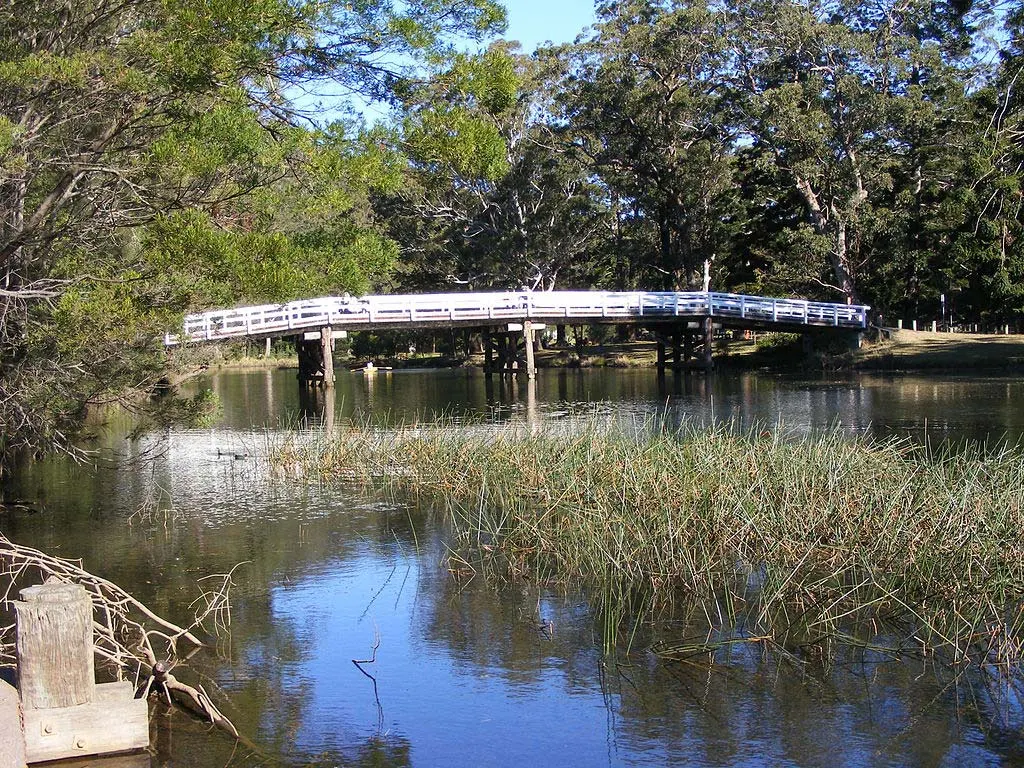Royal National Park - Detailed information about the attraction. Description, photos and a map indicating the nearest significant objects.
 |
| Royal National Park |
Description
Royal National Park is located 29 km south of Sydney. Officially established in April 1879, it is the second oldest national park in the world after Yellowstone in the United States. Initially, this specially protected natural area was simply called "National Park", but in 1955 the word "Royal" was added to the name in honor of Queen Elizabeth II of Great Britain, who drove through these places a year earlier during her visit to Australia. In 2006, the park was listed as a National Treasure of Australia.
 |
| Royal National Park |
There are several settlements on the territory of the park - Audley, Mayanbar and Bandina, which can be reached by highway.
As in any other national park, there are many hiking trails in the Royal National Park, barbecue and picnic areas have been created. Mountain biking is allowed on specially marked paths, and traffic on these paths is two-way. One of the most popular routes is a two-day journey along the seashore from Bandina to North Era with an overnight stay in a tent.
 |
| Royal National Park |
The landscape of the Royal National Park is very diverse - from coastal cliffs, undermined by sea waves, and small cozy bays to ancient high mountain plateaus and deep river valleys. Rivers flowing from south to north flow into the wide but shallow bay of Port Hacking, which is the northern boundary of the park. Sandy beaches open to the ocean are a great place for swimming and surfing. Some beaches can be reached by road, others only after a few hours of walking.
The flora of the park is as diverse as its topography. Rosemary, darwinia, casuarina, sundew, etc. can be seen on exposed heaths and coastal areas. Silver banksia, large-fruited oak and heather are found on the tops of ancient sand dunes. Honey flies, fire-tailed finches and southern soft-tailed finches scurry among these thickets. The coastal rainforest, which survived the human invasions of the 19th and 20th centuries, is dominated by the Australian tea tree and longleaf lomandra.
 |
| Royal National Park |
On the slopes of the river valleys, mainly eucalyptus, pine, red blood trees grow, and from shrubs - banksia, aralia, peppermint. There are also orchids, wild lilies, irises and hundreds of other amazingly beautiful flowers. Many representatives of birds have chosen the river valleys - golden whistlers, yellow-tailed cockatoos, laughing kookaburras, honey suckers, etc. Among the animals here you can see mountain kangaroos, wallaras, echidnas, koalas, wild dingo dogs.
On the territory of the Royal National Park, several buildings of the late 19th and early 20th centuries have been preserved: for example, in the town of Audley, a wooden dance hall built about a hundred years ago still operates, and on the western edge of the dam there is a huge wooden boathouse for boats, listed as a national treasure. At Cape Gibbon, which offers a beautiful view of the Sutherland Peninsula, Aboriginal rock paintings were found - this place was once used for initiation rites. And not far from the town of Karrakarong, right on the shore, you can see a huge rock in the form of an eagle's head.
